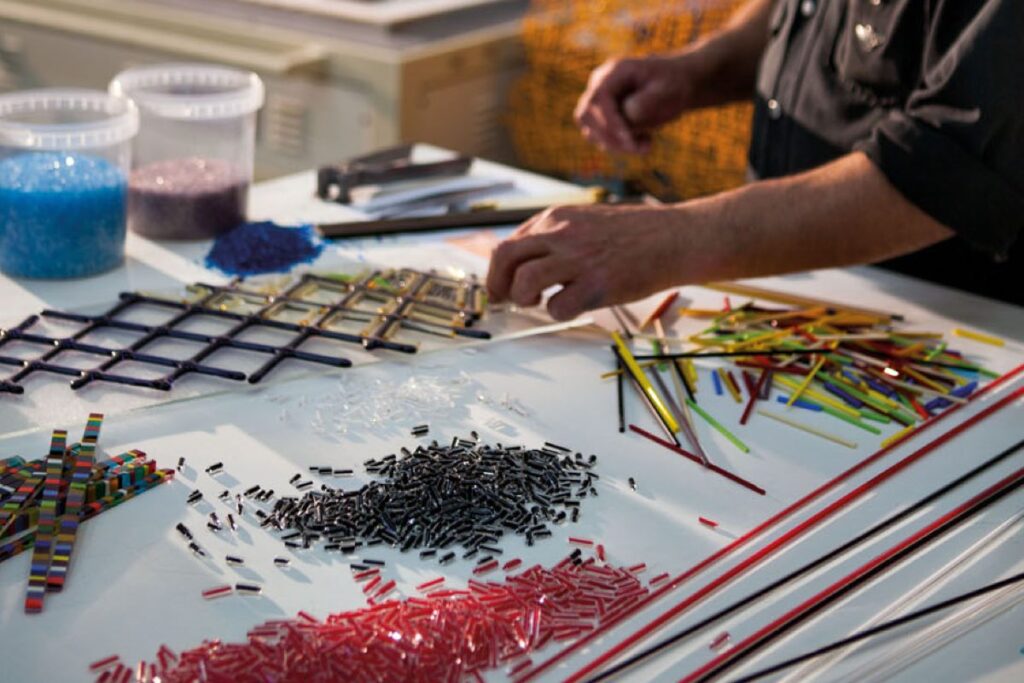Made in Italy luxury goes through Murano glass: discover its history
It is not that simple to answer the question “who invented Murano glass” because its history is really very ancient and rooted all the way back to the earliest origins of man. As far back as prehistoric times, in fact, primitive men had to deal with glass in its most natural form, obtained from the volcanic areas of the planet. It will only be with the Phoenicians and the Egyptians, however, that there will be early evidence with respect to actual glassmaking. It was in fact the priests who used the technique of casting or dipping to create the first artifacts.
But then when did the history of Murano glass begin? Murano is known worldwide for its ancient and valuable history, which is said to date back as far as the 1200s. In fact, glass had been produced on this island for years but, according to tradition, the real Murano glass industry developed when the Doge of the time decided to move all the historic glassworks from Venice to this island. The decision was made for safety reasons, as it was feared that the many wooden houses would not withstand the heat of the furnaces.
From here on, Murano soon acquired a great reputation, becoming the meeting point for the best glass artists not only internationally, but also worldwide. While, at first, the Murano glass industry produced only stained glass and necklace conteries, it soon expanded to include the wonderful art of glassblowing. Glass products of unbelievable lightness and the most unique, creative, peculiar shapes soon began to appear among the showcases.

Some of the most typical Murano glass.
Speaking of the history of Murano glass, one cannot help but mention the experience of the great master glassmakers and some of the most typical forms of glassmaking. As early as ancient times, in fact, the master glassmakers enjoyed a great many privileges precisely because of the respect they gained from all the inhabitants. As nobles, for example, they could marry the daughters of patricians and had at their disposal as many as two assistants, called servente and serventino respectively, who helped them in the delicate process of blowing.
Among the most famous types of artifacts they produced, we certainly mention murrine, and that is, colorful artistic objects that are made according to delicate steps and precise overlapping. Another typical technique of the island is the one that allows to create the “reticello” glass, and then that filigree glass made by means of special interwoven and colored threads that give that wonderful feeling of lace.
“Ice“ glass, on the other hand, is created by exploiting the thermal shock of incandescent glass in contact with cold water: by dipping the material still attached to the blow pipe, an effect similar precisely to ice sheets is created, with a smooth, intact but uneven surface. Finally, “aventurine” glass involves spraying copper particles onto translucent glass, causing a red-brown shimmer on the glass as an effect.

Tradition in glass processing VéVé Glass
The age-old technique of glass fusing consists of a process that has much to do with art: it involves placing multicolored glass sections on a ceramic fiber plate and then fusing them together. The latter step takes place in a special electric furnace, by which the various glass sections melt and combine with each other in a riot of shapes, patterns and colors. The result is a multicolored, flamboyant vitreous fabric also known as mosaic glass or murrina.
But the artistic flare does not end there: the operation can be repeated several times by arranging granules and sections of glass of different colors on the newly created sheet of glass. The whole, once placed in the furnace, will melt again, creating colorful plays of color, three-dimensional decorations and playful shapes in slight bas-relief. The result will be glass fusion objects with a striking aesthetic impact.
The true art of VéVé Glass’ master glassmakers is the wisdom of combining all the various types of glass: crystal, reticello, aventurine, rods, murrine, filigree, etc., together with ennoblements in fine 24 k gold leaf and 1000 silver leaf, for the creation of multi-colored objects with a sophisticated design suitable for all environments, with the most varied and appealing shapes, even in large sizes. Oval centerpieces, sculptures, mirror frames, discs, highly decorative panels and dividers, but also: customized and personalized decorative solutions with Client’s design.
Choosing VéVé Glass workmanship means enriching your environments with unique interior design solutions, innovative in form and traditional in materials and techniques. Do not hesitate to contact us for any information about our glass products, made with passion and based on the history of Murano glass.






